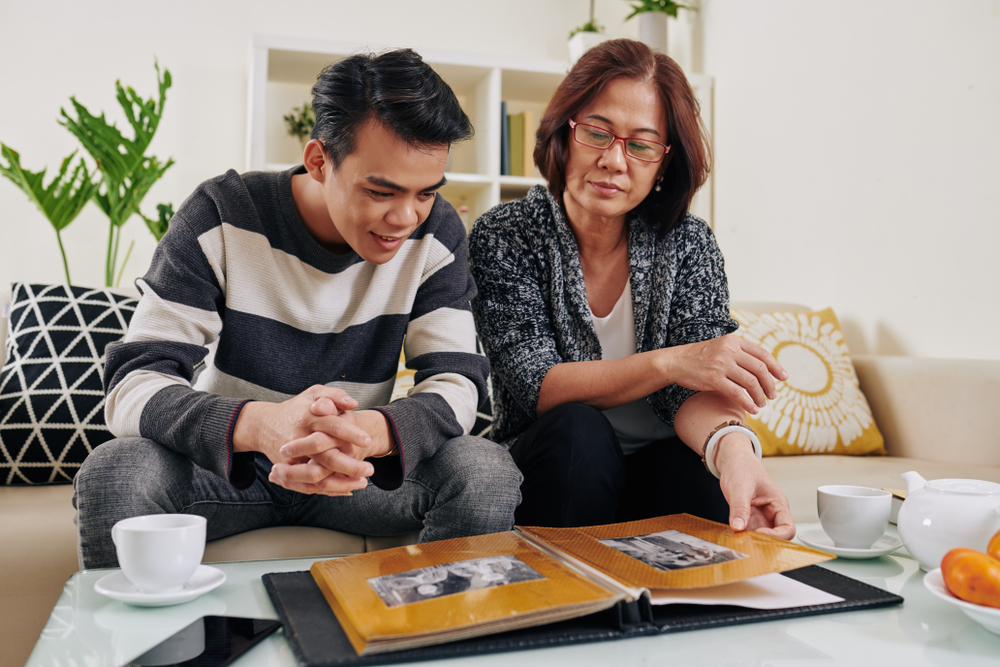
A picture tells a thousand words. That is the beauty of photovoice, that invites people to take photos that capture or represent, in some way, their experiences and what matters to them. Photovoice as a method is exciting as it allows people to tell their stories in their own way compared to questionnaires or interviews which capture what is important to researchers, but too often do not capture what is important to participants themselves. You can find out more about photovoice in Wang and Burris’s important paper (Wang and Burris, 1997 PDF).
Although interviews are designed to understand peoples’ subjective experiences, they are still designed by researchers and cover what they want to know rather than what people may want to share with us. Photovoice empowers people to communicate more on their own terms about is important to them and is not reliant on language. Hence, it has been particularly powerful in working with under-represented groups and communities. Focusing on studies that included stakeholders as partners in developing or conducting photovoice interventions, Halvorsrud and colleagues conducted a systematic review of photovoice intervention studies from 2008-2019 focusing on any health outcome and did not limit the issue/problem that was being targeted by photovoice.

Photovoice is often used in research to capture people’s subjective experiences, and has been powerful in work with marginalised communities.
Methods
Halvorsrud and colleagues searched the international healthcare literature and asked the following questions:
- What methods using photovoice have been described and measured in the international healthcare literature?
- Does photovoice lead to any impact on health or other outcomes of interest?
- Does photovoice work better for some groups or in some settings? And might some particular components of the photovoice intervention or way in which the study was conducted explain this?
The authors searched for studies that involved some comparison of photovoice interventions with a control condition, including randomised controlled studies, pre-post comparisons, cohort, cross-sectional and case-control studies. Photovoice interventions use the method to engage with participants to address a specific health issue. They searched health databases, contacted authors if the papers were unavailable, checked reference lists in included papers and tracked publications of data from relevant study protocols.
Only studies that included stakeholders as partners in developing or conducting the photovoice interventions were identified: in practice, this could be service users, carers, healthcare professionals, students, members of a certain community or members of the public. Studies of photovoice involving any health conditions – along with healthy people if the focus was on improving health outcomes such as well-being – were included.
Two reviewers independently screened titles, abstracts and potentially relevant full texts. Two reviewers also independently assessed data quality using the Effective Public Health Practice Project’s Quality Assessment Tool for Quantitative Studies and assessed whether ‘gold standard’ approaches to implementing photovoice were followed, namely (1) introducing participants to the project and to photovoice, (2) a photo reflection session using certain questions to facilitate reflection on the photos taken by participants, and (3) participants themselves involved in developing captions for the photo. Uncertainties were resolved with a third reviewer.
Results
Twenty-eight studies were included in the review: 8 randomised controlled trials, 14 pre-post comparisons, 3 non-randomised intervention studies and 3 cross-sectional studies. Seventeen studies were published in peer-reviewed journals, 6 in postgraduate theses and 5 were conference abstracts.
Nineteen studies were assessed as methodologically weak, 5 were of moderate methodological quality and 4 were of strong methodological quality.
Twenty-one studies were conducted in the USA, 20 studies were with adults, 7 were conducted with children/young people and one study included both adults and children/young people.
Outcomes of interest were health knowledge, self-efficacy (e.g. self-management of diabetes), health behaviour (e.g. adherence, physical activity), mental health outcomes (e.g. meaning making, depression), physical health outcomes (e.g. body mass index), community or social functioning (e.g. social connectedness, activism) and health and safety outcomes (e.g. intention to wear respirators). A narrative review of the findings and random effects meta-analysis were conducted.
The main finding was that significant differences were found on health knowledge and community function at the end of the treatment/intervention period, but this was not sustained at follow-up.
Photovoice had a moderate effect on improving health knowledge, but there was substantial heterogeneity, i.e., some studies showing improvement and some not, while minority ethnic groups showed greater benefit. Moreover, a small significant positive effect post-treatment was suggested for community or social functioning (i.e. social connectedness, activism). No significant effect was indicated on other outcomes including self-efficacy, health behaviour, mental health, physicial health and health and safety outcomes.
Subgroup analyses found that disadvantaged ethnic minority groups in particular might benefit from photovoice. Using visual formats might be more inclusive for marginalised groups who may be less likely to engage with mainstream services due to inequalities and mistrust.

This review suggests that photovoice is promising in improving health knowledge and may be particularly beneficial for disadvantaged ethnic minority groups.
Conclusions
Halvorsrud and colleagues concluded that the evidence shows that photovoice can improve health knowledge. However, further studies are required to identify how it might impact on self-efficacy, positive health behaviour, improved physical and mental health, and social or community outcomes. The review included studies looking at photovoice with a very diverse range of outcomes across a range of areas targeted by photovoice, from diabetes to hepatitis, so the mixed picture might be expected.

The scope of this review was wide including all health conditions, and indicated areas where further research on photovoice is required.
Strengths and limitations
The strengths of this review are as follows:
- First systematic review of the effects of photovoice in the international healthcare literature.
- All health conditions and a wide range of outcomes were included.
- Studies focusing on healthy individuals if the aim was to improve health or well-being in the population were also included.
- All ages and geographical settings were included.
- All studies involved stakeholders other than researchers in developing or implementing the photovoice interventions.
- Ethnic minorities were represented in 13 studies
However, there were also some limitations:
- The study was limited to English language.
- There were few studies for some outcomes – and studies of low methodological quality – particularly for physical health and health and safety outcomes.
- It is unclear which components of photovoice are effective across studies (i.e. education, therapeutic, reflection, discussion).
- Further information and discussion of the different photovoice interventions, the diverse problems targeted by photovoice and the mechanisms of change would be informative.

Photovoice is an exciting way of engaging people using visual formats as a springboard for improving health knowledge and connectedness with others.
Implications for practice
Photovoice is a promising method for engaging with people about their experiences. The increasing availability of cameras on phones really opens up possibilities for taking pictures in a very flexible way, in terms of location and timing.
It is important to be aware that while some studies showed positive effects on health knowledge, some studies also showed negative effects. This further highlights the importance of understanding much more about how photovoice was implemented, the context in which it was implemented and how stakeholders experienced photovoice.
Given the increasing focus on large inequalities in the burden of disease and access to care, engaging with people who are marginalised and may distrust mainstream services is more important than ever. Services, clinicians and researchers need to be creative in reaching people who are not well represented and whose voices and concerns are often not heard.
Having been part of a photovoice workshop with people who have experienced involuntary psychiatric admissions, it was apparent that people coming together to develop captions for their photos can be a very powerful springboard for those with similar experiences who want to make sense of their difficult and traumatic experiences on inpatient wards and connect with others who have been in their shoes. In the workshop I participated in, it became a powerful peer-to-peer intervention. There is increasing interest in peer support (White et al. 2020) in mental health more widely. It was a real privilege to be part of a photovoice workshop based on peoples’ own photos and reflections of what matters to them.

Services, clinicians and researchers need to be creative in reaching people who are not well represented and whose voices and concerns are often not heard.
Statement of interests
RM is a co-applicant on a NIHR grant “Experience based investigation and Co-design of approaches to Prevent and reduce Mental Health Act Use”.
Links
Primary paper
Halvorsrud K, Eylem O, Mooney RM, Haarmans M, Bhui K. Identifying evidence of the effectiveness of photovoice: a systematic review and meta-analysis of the international healthcare literature. Journal of Public Health. 2021 Apr 5.
Other references
White, S., Foster, R., Marks, J., Morshead, R., Goldsmith, L., Barlow, S., Sin, J. and Gillard, S., 2020. The effectiveness of one-to-one peer support in mental health services: a systematic review and meta-analysis. BMC psychiatry, 20(1), pp.1-20.
Wang C, Burris MA. Photovoice: Concept, methodology, and use for participatory needs assessment (PDF). Health education & behavior. 1997 Jun;24(3):369-87.
Photo credits
- Photo by Brigitta Schneiter on Unsplash
- Photo by Ugo Mendes Donelli on Unsplash
- Photo by Joice Kelly on Unsplash
- Photo by Patrick Hendry on Unsplash
- Photo by Jr Korpa on Unsplash

Hi there,
I agree, photo will tell so much more than even millions of words, I can not imagine how you could develop a reliable study on this though. And it only because that in my opinion there are no 2 individuals alike so comparing would be highly unprofessional in my own humble opinion.